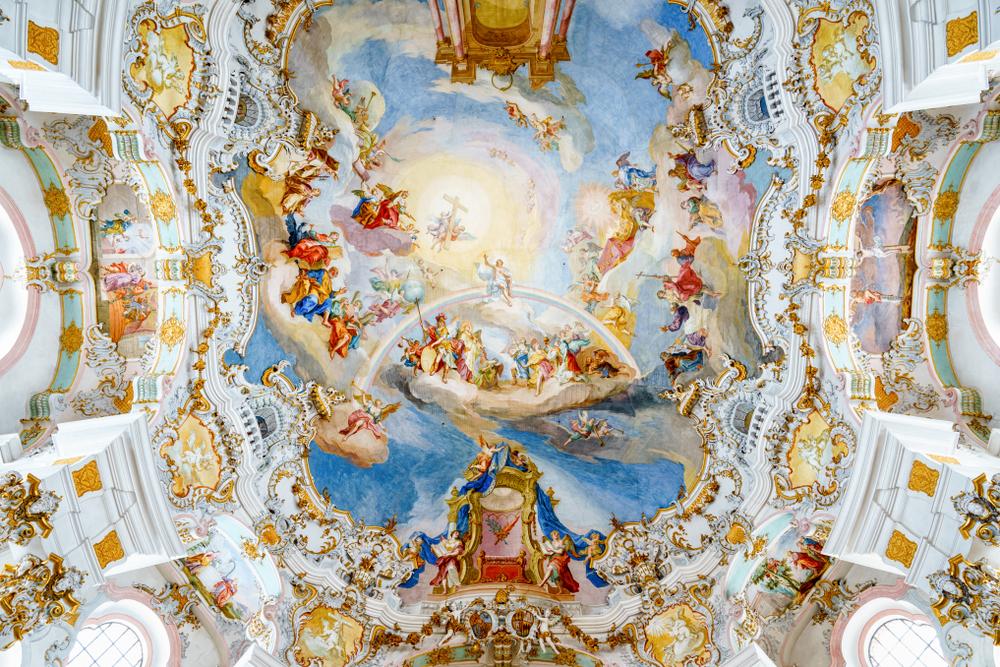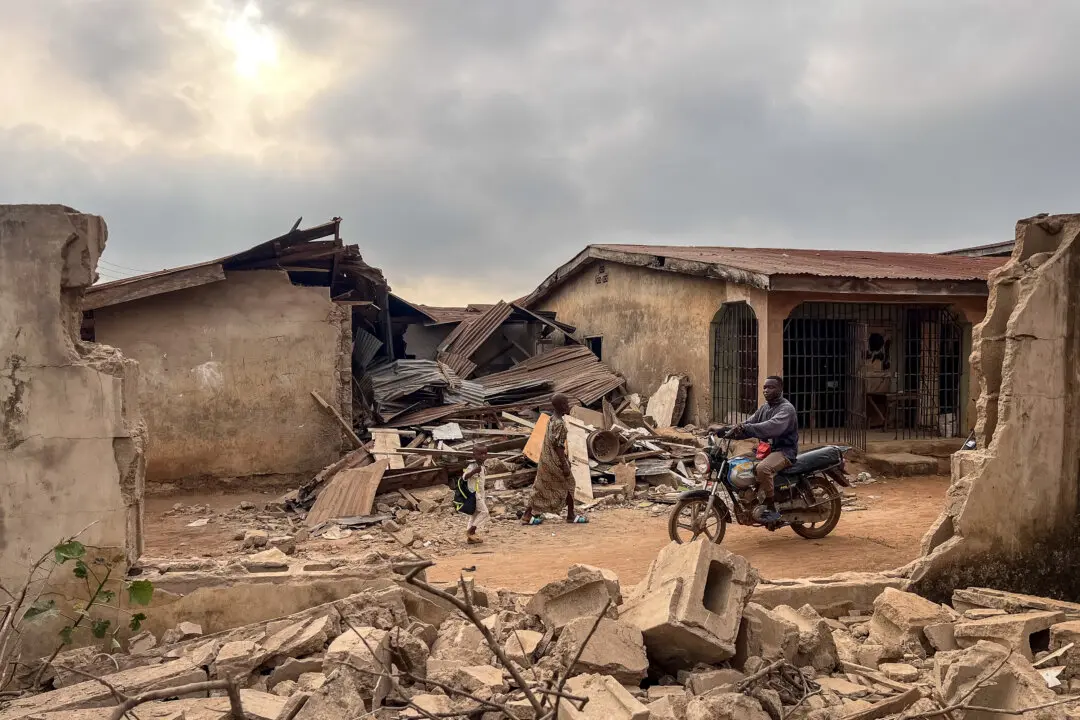On June 14, 1738, in Wies, Bavaria, part of the Holy Roman Empire, a wooden figure of Christ appeared to shed tears. Inspired by the incredulous event, pilgrims from across Europe began to visit the tiny chapel that was built in 1740 to house the figure. So many pilgrims visited the chapel that the nearby Steingaden Abbey decided to build a church to accommodate them.
Constructed between 1745 and 1754, the Wieskirche, or the Pilgrimage Church of Wies, is considered a Rococo masterpiece. The interior features astounding frescos with trompe l’oeil, a painting technique that renders objects realistically so that they appear to be three-dimensional. It also features the stuccowork of the Wessobrunner School of stucco artists.






